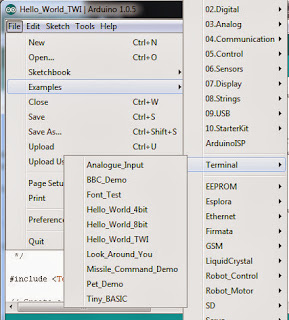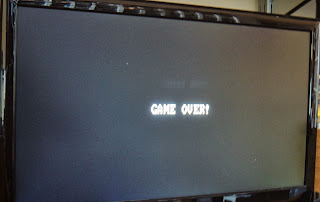This is an old post, preserved for reference.
The products and services mentioned within are no longer available.
The principal is this, you have an Arduino with your code in and this library, and connected to that you have a second ATMega328P (the same chip as is used in the Arduino) and a 74HCT166 shift register. Together they do all the work involved in generating a composite video signal suitable to connect to a TV or video monitor. You can build up these additional components on breadboard, or I have build a shield which fits onto the Arduino with all the required components on. The DIP switches select the default font and communication settings.
Interfacing between the Arduino and the video processor can be done in three ways. The original way was an 8 wire parallel bus with 2 handshaking control lines. A second mode was later added which allowed this to be reduced to 4 wires and 2 handshaking lines. The third method uses 2 wires in TWI or I2C mode, which was originally a fork of the code as part of an earlier version of this library, but has now been rolled into the main code. (Note: the diagram below shows shift/load connected to the ATmega in the way I had originally connected it. Since this post, Grant has changed the code to use PC3 (A3) for shift load).
The source and hex file for the video processor are unmodified from Grant's original and are included in the library with permission. The fuses need to be set to E6 D9 FF. You can program an ATMega328P using an EPROM programmer (such as the mini pro shown above) or Arduino as ISP (see the earlier article for further information on this and the avrdude command line).
As previously, I've had fun writing a few samples. The mock up BBC start screen now looks better in 40 character mode which more closely matches mode 7 (the previous demo was more like mode 0). The homage to Look Around You also works better in 40 character mode.
When testing the line drawing, it reminded me of the old Missile Command games, so I mocked up a demo of that. This is just a simulation, it just fires at the bases and loops around after firing 5 shots. I don't know if there is enough to be able to make that a playable game, maybe.











